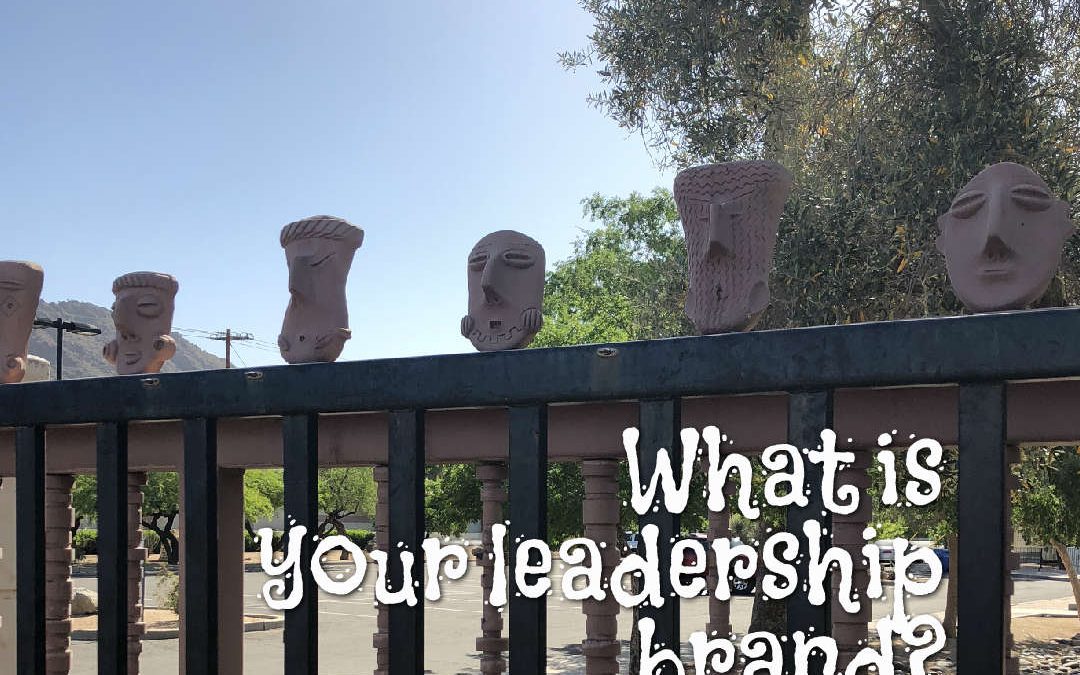Last week I spent time in a desert town and met many different types of people and leaders. Each connection made a big impact on how I eventually interacted with each of these individuals. Some of the leaders were efficient but lacked emotion while other leaders spent time getting to know me and finding out about my concerns. There were even some leaders who were overly patronizing with little execution.
Each leader has a choice about how they want to present themselves. The way we behave and communicate is our unique style or brand. Identifying our brand often takes looking inwards of who we are, where we have been and where we are going. Branding is a process that evolves throughout our careers but essentially reflects our true leadership.
[Tweet “Our leadership brand shows others who we are at the core.”]
Let’s look at six faces of your leadership brand:
1. Your Core Values
In developing our leadership brand we need to first identify what is important to us. Look inside and ask yourself what you value most. This doesn’t mean simply saying “honesty and truthfulness” are important but rather how honesty is displayed in your leadership. Think about if it is critical to be open or flexible and how you would show that while leading. Even consider whether a project completion takes precedence to people concerns or visa versa. Whatever you value make it part of your brand.
2. Your Vision
To be a leader with a reputable brand it is critical to know where you are headed and what is your leadership purpose.
- Be clear on the direction you want to pursue and make sure each action and decision supports that path.
- If a project or responsibility you are given doesn’t seem to make sense to you try to weave it into your vision in some way.
- Share your vision often and with energy.
3. Your Communication Style
The way a leader communicates is a big piece of their brand recognition. We need to be aware of the language we use and make sure it is positive, clear, direct and respectful. Listening is also connected to our communication style. One of the leaders I met in the desert community nodded a lot but had very poor listening skills. That made a huge negative impact on his brand.
4. Your Interactions With Others
Probably one of the most obvious ways people evaluate your leadership brand is by the way you connect with them. When people feel we value their input and contributions they are more willing to work harder and give more of themselves. This one leader I met took the time to learn where I came from and what I did.
- Ask team members about their interests.
- Delight colleagues and customers by surpassing their needs.
- Be approachable with a smile and warmth.
- Keep an open mind to different perspectives.
[Tweet “The way a leader interacts with others defines their brand of leadership.”]
5. Your Empathy Factor
An empathetic leader jumps into the shoes of someone else and sees the world through their eyes. When co-workers are struggling or facing difficult deadlines, be the leader to roll up your sleeves and help out. Share your mistakes and missteps and how you worked through them. Making empathy part of our leadership brand will draw in others and cultivate strong work relationships.
6. Your Ability To Serve
Our willingness to build someone else up and make a difference in their life is what servant leadership is all about. Thinking of ways to help others grow is the underlying purpose a leading.
- Help others identify their strengths, gifts and talents.
- Be open to making work connections for team members.
- Give credit when someone makes a contribution to a project.
- Share skills that can empower someone in their career.
How have you created your leadership brand? What other elements can help develop a particular brand of leadership?



Was curious what you’d have her and love each one – particularly that you included empathy. Too often leaders think that they need to be stoic but empathy is a part of being human. Truly, that’s who we all want to work for – another human being.
Will share!
Alli
Empathy is a critical component to our leadership brand because it either brings us closer to the people we work alongside or it pulls us away. When our team members feel our concern for them we build stronger relationships that last through challenging projects.
Thanks so much Alli for your thoughtful additions!